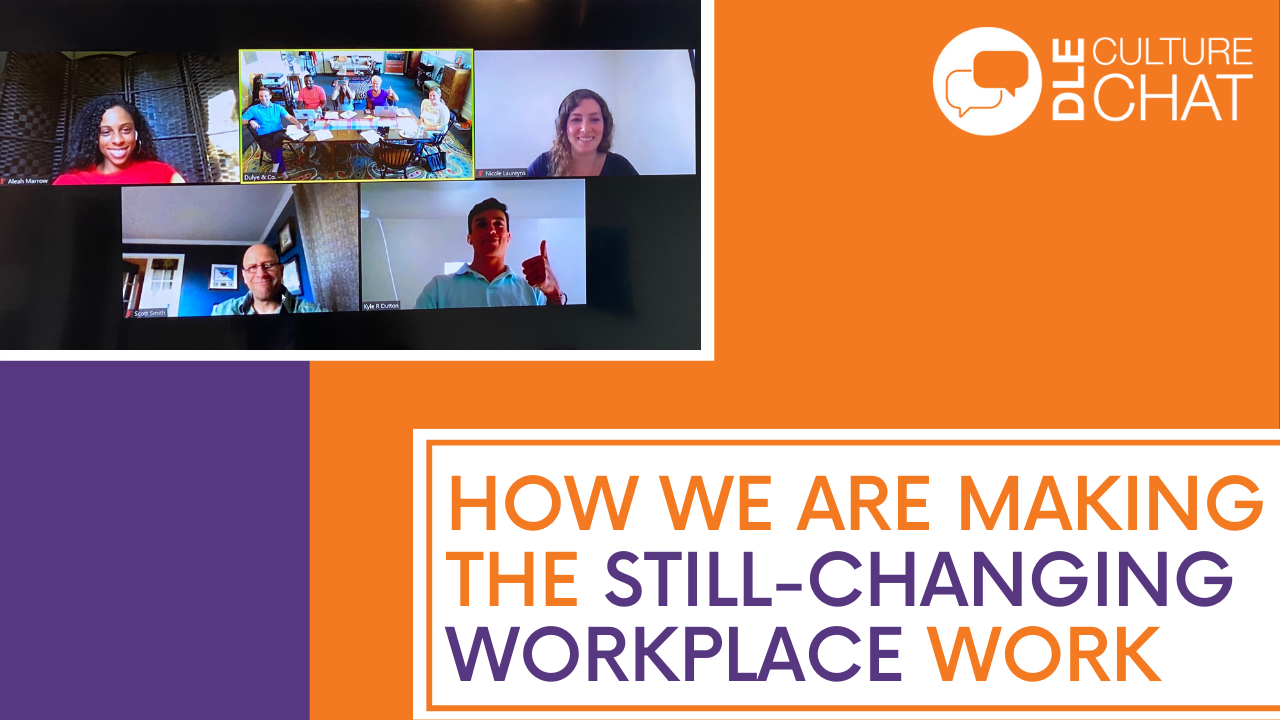
HOT READS: POOCHES, PROMOTIONS AND PHONES
July 7, 2021
DOES THE NEW WORKPLACE YIELD MORE CONTROL OVER WORK-LIFE BALANCE?
July 7, 2021Real-time polls, active chats and personal story swaps on returning to the office created a vibrant vibe at the June 25 Culture Chat. Professionals from diverse roles, regions and organizations compared their work situations. Some are together with colleagues in person, others are still working remote and the third group is somewhere in between.
“Will we be less productive when we change our established remote habits and get back into the office?” pondered one attendee. Chimed another, “I think working remotely allowed me more control over my schedule, but I have struggled with establishing boundaries of when to stop work and ‘get home.’”
Cecilia Hirsch, Human Resources Manager in Higher Education, who co-facilitated a lively conversation with DLE Alum and Founder of Surrounded by Opportunities Sheryl Owen, provided a roster of readings and resources for choosing where and how to spend your work time. Here are a few selections, with Cecilia’s comments:
- On continuing remote work: “More than two-thirds (68 percent) of U.S. workers would prefer a hybrid workplace model after the pandemic ends, according to Prudential’s Pulse of the American Worker survey, conducted by Morning Consult in March. Of those surveyed who have been working remotely, 87 percent want to continue to work remotely at least one day per week post-pandemic.” Read more.
- Mass resignations coming? “Two in five workers surveyed in December by SilkRoad Technology said they planned to resign, based on how their employer handled the pandemic. The survey also revealed a potential disconnect between employees and execs. While 86 percent of execs surveyed said they demonstrated their commitment to their employees during the pandemic, more than half of employees surveyed said they wanted more support.” Read more.
- Possible inequities with remote setups: “I see a real danger of two separate—and likely unequal—cultures developing in the hybrid model. Historically, one of the biggest challenges to workplace equity and inclusion is when some groups enjoy more exposure and relationship-building time than others.” Read the article here. Sheryl Owen also shared this article on the topic.



